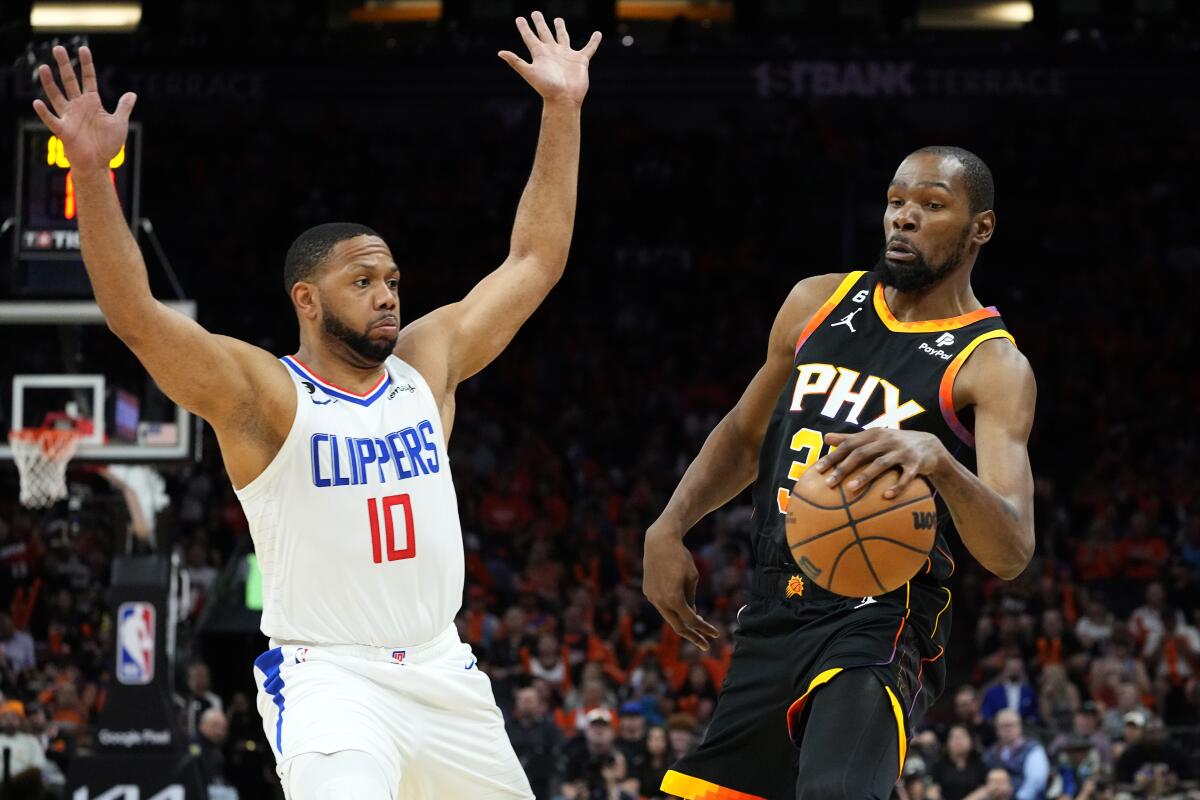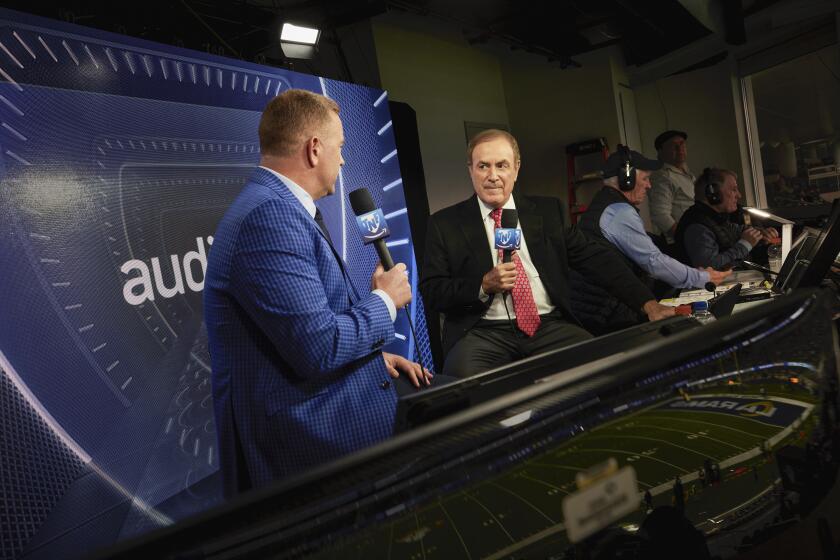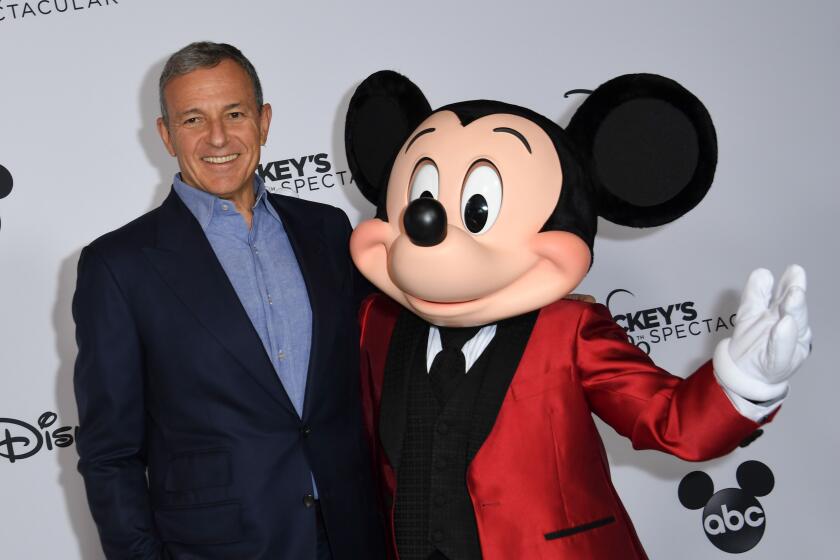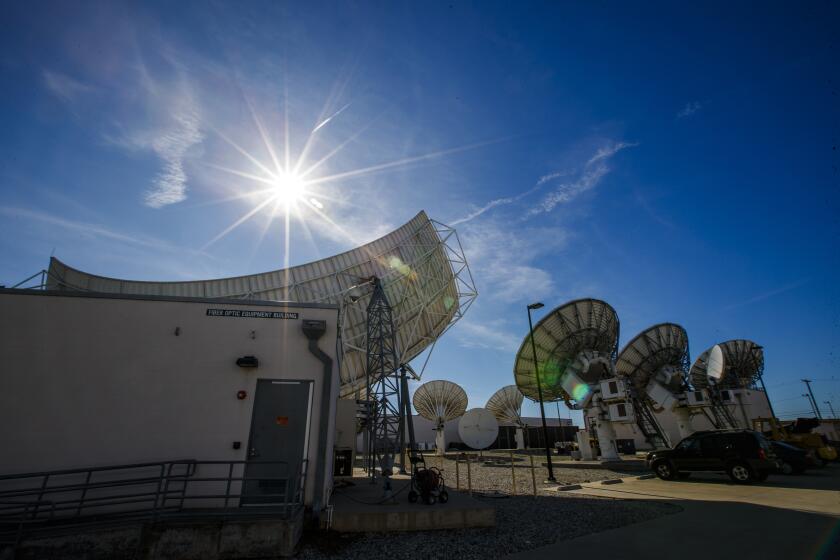Why sports are returning to free over-the-air TV

For decades it wasn’t easy to be an avid fan of your favorite basketball, hockey or baseball team without cable or satellite TV.
Outside of the NFL, which provides every game on free television, the other leagues presented a vast majority of their matchups on regional sports networks. Unless you had a pay TV subscription, your options were heading to a sports bar or listening to the radio.
Cable cord-cutting, driven by the audience’s shift to streaming video, is shrinking the number of households regional sports networks can reach. Games seen locally on cable are now available in 40% of homes or less in many markets — half of what it was 10 years ago. National networks such as ESPN and Warner Bros. Discovery’s Turner networks are facing the same challenge and are looking at ways to supplement the subscriber losses with streaming.
But on a local level, the subscriber losses and the recent upheaval at two regional sports network groups are driving teams to make more games available for free to anyone who can get an over-the-air TV signal with an antenna. And station owners are lining up to accommodate them. Most major TV companies are currently in talks with teams about acquiring local rights to their games.
Last week, the NHL’s Arizona Coyotes announced they will air all but one of their 82 games on a Scottsdale outlet belonging to Cincinnati-based E.W. Scripps. The owner of 61 stations across the country did a similar deal earlier this year with the Las Vegas Golden Knights, which will put all local telecasts of the 2022-23 Stanley Cup champions on its station in the Las Vegas market.
In the NBA, the Phoenix Suns will air the bulk of its schedule on Atlanta-based Gray Television’s stations in Arizona, while the Utah Jazz will be seen on a Sinclair Broadcast Group station in Salt Lake City renamed KJZZ.
Fans in Los Angeles, where most local telecasts remain on regional sports networks, will also be seeing more games on free television.
Last month, the CBS-owned KCAL Channel 9 announced it will carrying six Los Angeles Kings games this season, the first time the team will be seen on a local station since 1999 as all local telecasts have previously been on cable. The Kings were seen for years on Channel 9 when it was known as KHJ.
(The Los Angeles Dodgers, who for six years had limited reach for local games before its network SportsNet LA was more widely distributed in 2020, have in the past put a handful of games on broadcast TV to placate frustrated fans.)

Nexstar Media Group’s KTLA renewed its deal to be the free TV home of Los Angeles Clippers, showing four preseason and 11 regular season games. The telecasts will also air on Nexstar stations in San Diego, Bakersfield, Fresno, Palm Springs and Santa Barbara.
While most Clippers games remain on cable’s Bally Sports SoCal, the team said it wants the increased exposure on broadcast TV ahead of its move to Intuit Dome, a new arena that will open in the 2024-25 season. Before last year, the Clippers had not been seen locally on free TV since 2009.
Terms of the recent TV deals were not disclosed, but executives familiar with the discussions say the rights fees paid by stations to the teams are likely less than what teams were collecting from regional sports networks, which have a dual revenue stream of advertising sales and high pay TV subscription fees. The trade-off is wider exposure that can help boost other sources of revenue.
“If you’re able to get yourself in every TV home, the value of your advertising, your on-camera signage in the arena and if you’re a hockey team, virtual signage on the ice and dashboards, goes up substantially,” said Lee Berke, president of LHB Sports, Entertainment & Media, who has consulted on a number of deals for teams moving to broadcast. “You want to be seen by as many fans as possible.”
Ratings for live games on an over-the-air broadcast outlet are typically two to three times greater than what they pull on regional sports networks, as they have the potential to reach every home.
(The NFL has long been a proponent of making its games available on free TV in the markets of the teams playing, even those contests shown on cable and streaming platforms).
“TNF” play-by-play legend Al Michaels spoke for the fan when he critiqued last season’s contests in the streamer’s exclusive NFL package. Changes were made.
Xavier Gutierrez, president and chief executive of the Arizona Coyotes, said the team’s ownership was concerned about the dwindling number of homes subscribing to the now-defunct Bally Sports Arizona regional sports network and how it might impact merchandise and ticket sales.
“We were having less and less exposure and engagement and reach in this market,” Gutierrez said in an interview. “It was really having an impact.”
The option of over-the-air TV has been getting a closer look since the bankruptcy of Diamond Sports, a group of regional networks assembled by Sinclair. The company had to restructure the more than $8 billion in debt it incurred from its 2019 purchase of regional cable channels. As part of the company’s financial reorganization, some of its contracts with teams such as the Coyotes were dropped, leaving them without an outlet to bring their games to fans.
Local TV rights in several markets also became available after the merger that created Warner Bros. Discovery. The new company decided to wind down its regional sports TV business — AT&T SportsNet — choosing to focus on national sports rights for cable networks TNT and TBS and streaming service Max.
The discord in the regional sports network business, which is likely to continue as the Diamond bankruptcy plays out, is seen as an opening for TV station owners who are battling to hold onto audiences who now spend more time streaming than watching traditional TV.
The storied television network and its stations have been part of Disney for 27 years. But the company’s streaming ambitions may put the unit on the block.
Live sporting events are the best weapon broadcasters have to hold onto viewers. They accounted for 95 of the 100 most-watched shows ranked by Nielsen last year, and nearly every TV station ownership group is talking with teams to get their own piece of the action.
“When we started our sports division a year ago, you know we absolutely picked our moment in time because we could see what was happening with the regional sports networks,” said Brian Lawlor, president of Scripps Sports. “We see an immense opportunity for local broadcasters to be a solution.”
Scripps has been a proponent of over-the-air television, pushing the use of antennas to get signals. The company also markets a DVR device called Tablo, designed to record broadcast and free streaming channels.
Long known as the ‘Worldwide Leader in Sports,’ ESPN is grappling with cord-cutting, rising rights fees and skepticism from Wall Street.
Local TV stations, especially outlets that did not carry network programming, were long the principal destination for sports viewing. Once the Madison Square Garden Network was founded in 1969 and provided New York Knicks and Rangers games to Manhattan residents, teams started moving to cable, with many becoming stakeholders in their own channels.
While TV station owners are enjoying the changing tide by picking up valuable sports programming, they know the audience’s gravitation to streaming is not going to reverse. Executives at Walt Disney Co.’s sports media giant ESPN have already acknowledged that its networks will eventually be offered as a stand-alone streaming service as pay TV subscriptions decline by more than 7% a year.
Recognizing that many consumers will want a streaming option, TV station companies are working with teams to offer games direct-to-consumer via the internet as well.
Berke describes the combination as “beaming and streaming,” which may become the model going forward.
Golden Knights fans will be able to sign up for KnightTime+, which will stream all of the team’s games not shown on national TV. Scripps will also help the Coyotes develop a streaming product for Arizona fans.
The Suns launched Suns Live, where local fans can stream 70 games for $109 or $14.99 a month. The Jazz launched a similar service of their fans, which allows them to stream single games at $5 in addition to monthly and annual deals.
(The Clippers are entering their second season with their own streaming service, ClipperVision, which provides a full season of the team’s local telecasts for $199.99.)
Station groups are not limiting themselves to local sports deals. Scripps just finished its first season in a three-year pact with the WNBA, running the women’s league games over 15 Friday nights this past season on ION, the company’s broadcast network which typically airs procedural crime dramas. Lawlor said the company is looking for similar options, as the WNBA has brought a younger and more diverse audience to the network.
The CW, owned by Nexstar, has added live sports as well, carrying the LIV Golf events and a schedule of ACC college football games. In 2025, the network will become the exclusive home to the NASCAR Xfinity Series, airing 33 live races annually. It’s the first time every NASCAR Xfinity Series race will be available on free, over-the-air broadcast television.
Such sports properties might not have been considered popular enough for a broadcast TV platform in the past. But in a dynamic TV landscape where viewers have gravitated to streaming for sitcoms, dramas and movies, the rules of the game have definitely changed.
More to Read
Inside the business of entertainment
The Wide Shot brings you news, analysis and insights on everything from streaming wars to production — and what it all means for the future.
You may occasionally receive promotional content from the Los Angeles Times.














